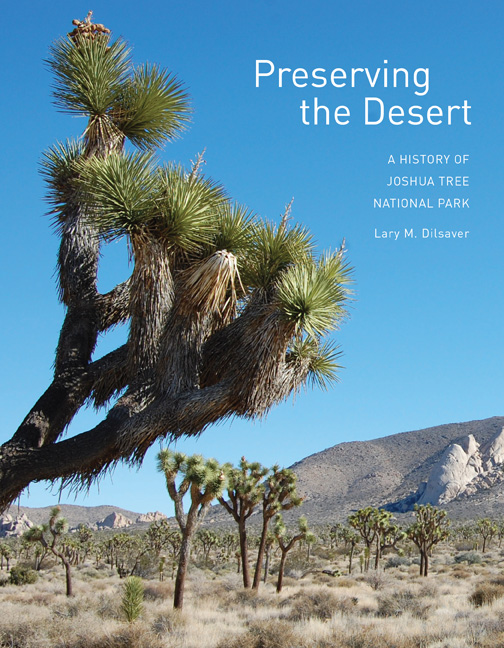
| |
 |
Preserving the Desert: A History of Joshua Tree National Park The first history ever written on California's Joshua Tree National Park, in which we witness America's changing attitudes toward the desert as a place worthy of preservation. National parks are different from other federal lands in the United States. Beginning in 1872 with the establishment of Yellowstone, they were largely set aside to preserve for future generations the most spectacular and inspirational features of the nation, seeking the best representative examples of major ecosystems such as Yosemite, geologic forms such as the Grand Canyon, archaeological sites such as Mesa Verde, and scenes of human events such as Gettysburg. But one type of habitat—the desert—fell short of that goal in American eyes until travel writers and the Automobile Age began to change that perception. Soon after the National Park Service was founded in 1916, it began to explore and seek out a possible park in the deserts of Southern California during the 1920s. But many agency leaders still carried the same negative image of arid lands shared by many Americans at that time—that desert lands are hostile and largely useless. One wealthy woman—Minerva Hamilton Hoyt, from Pasadena—however, came forward, believing in the value of the desert. With vision and fortitude, she convinced President Franklin D. Roosevelt to establish a national monument that would protect the unique and iconic Joshua trees and other desert flora and fauna. Thus was Joshua Tree National Monument officially established in 1936, with the area later expanded in 1994 when it became Joshua Tree National Park. Lary Dilsaver, in Preserving the Desert, offers the first comprehensive history of Joshua Tree National Park, from its inception to the present time, showing how a growing cadre of environmentalists and recreationalists have fought to block ongoing proposals from miners, ranchers, private landowners, and real estate developers who historically have refused to accept the idea that any desert is suitable for anything other than their consumptive activities. To their dismay, Joshua Tree, even with its often-conflicting land uses, is more popular today than ever, serving more than one million visitors per year who find the desert to be a place worthy of respect and preservation.
|
$38.50 U.S. (short discount) No e-book has been authorized. Published in January 2017 Distributed by University of Virginia Press Book Events & Exhibitions: Los Angeles Times: How a South Pasadena matron used her wits and wealth to create Joshua Tree National Park 2/2019
|